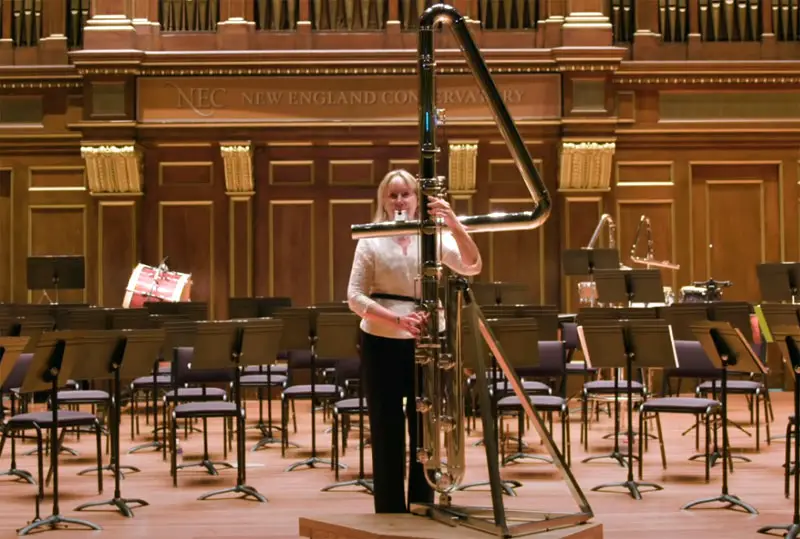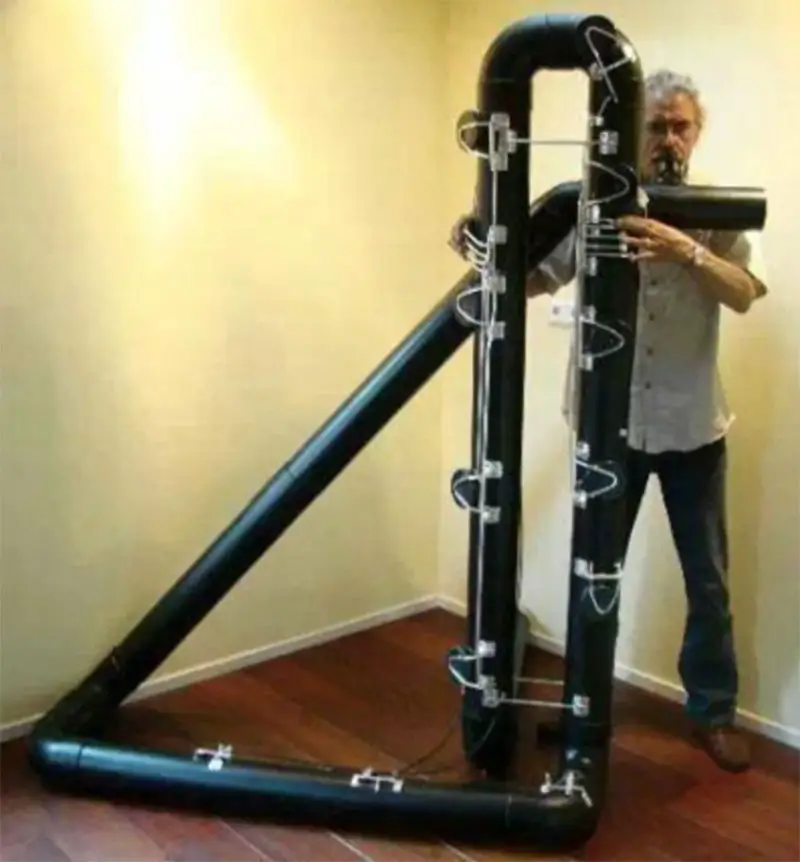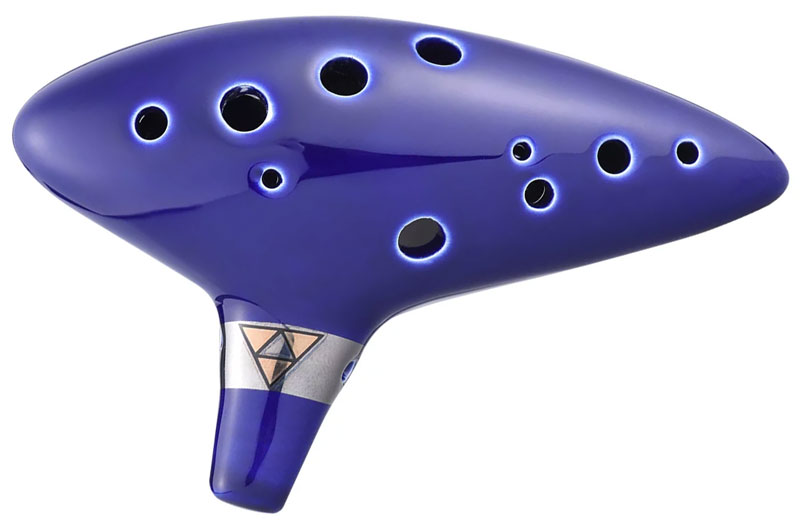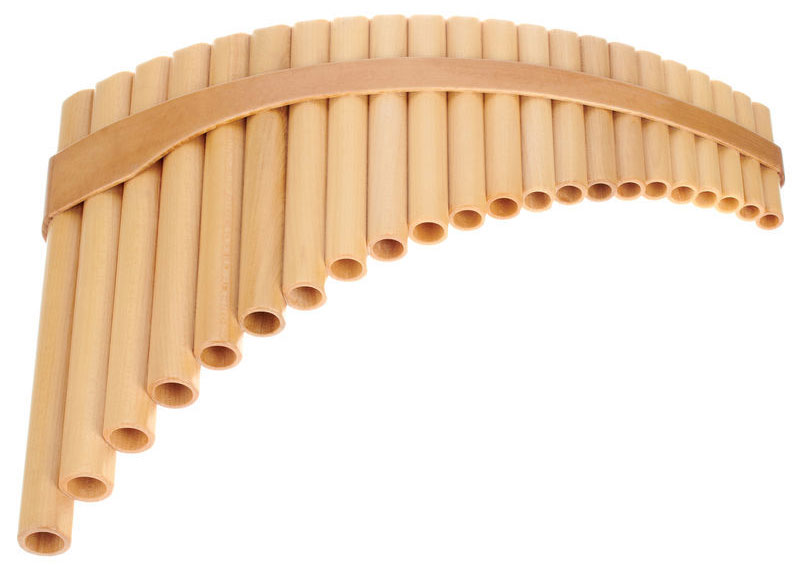One of the oldest and most easily recognizable instruments in the world, the flute can be found in almost every corner of the planet. The earliest recovered flutes were made of bone and date back more than 40,000 years.
Today, simpler flutes still exist, but most have become quite complex and may be made of either organic or synthetic materials.
The following flutes are just a small sampling of what’s out there. You might be surprised to learn some of these instruments belong to the flute family, while others show just how much variation there can be to a common theme.
See Also: 13 Types of Clarinets
Types of Flutes
1. Alto Flute

This transposing flute is larger than the concert flute and in the key of G, with a range of G3 to G6 with an altissimo register to Db7. Due to its larger size, some alto flutes are straight while some have a curved head joint to make it easier for smaller flautists to use.
2. Baroque Flute

This wooden flute only has six holes with the embouchure hole being much smaller than modern flutes. This gives it a much softer tone. Additional notes require cross-fingering to achieve.
3. Bass Flute

Keyed to C3, the bass flute has a U-shaped head joint to prevent it from being too long to comfortably hold. Despite the name, this is actually a tenor flute, with the true bass flutes being much rarer.
Bass flutes are often used for chamber music, but isn’t a popular instrument for orchestras.
See Also: 11 Different Types of Tubas
4. Concert Flute

Also known as the C flute, this is the most iconic of modern flutes. It’s a transverse treble flute containing 15 or more finger holes, giving it a range of three octaves beginning with Middle C. As the name implies, this flute is a regular fixture in most concert settings.
5. Contrabass Flute

This hard to find flute is a staple in flute ensembles and often used in chamber music, but is only produced by a few flute manufacturers. The flute is so large that it’s played while standing and rests on the floor. It has a horizontal head joint and is played transversely.
While there are variations in tuning, those in the key of C are two octaves below Middle C and may also contain a low B. While most are made of metal, PVC contrabass flutes are not unheard of.
Read Also: 13 Types of Trombones
6. Dizi

The Dizi is believed to have been invented as long as 9,000 years ago and is most often a transverse bamboo flute. There are many subtypes of dizi, and some have been known to be made from jade.
While there’s some small variation from one type to another, the dizi generally has six finger holes. Despite the limited holes, a dizi can cover around 2 ½ octaves.
The dizi has a unique feature called a mo-kong. This small hole is located between the embouchure and finger holes and is covered in a thin membrane made of bamboo called a di mo glued over it. This membrane creates a buzzing harmonic sound to the flute’s normal tone.
7. Double Contrabass Flute

The largest and deepest-toned metal flute in existence, the body of this instrument measures a full 18 feet in length. As with the other bass flutes, this one rests on the greyhound with a horizontal mouth that is played transversely.
This flute has a pitch three octaves below Middle C, with its lowest note being C1. A PVC version does exist, but it’s known as a subcontrabass flute despite not being the same as an actual subcontrabass.
See Also: 13 Types of Cellos
8. End-Blown Flute

One of the more obscure categories of flute, these have a hole at the end into which air is blown, usually at an angle. A common subtype of this group is the notched flute, which has a notch on the blowing surface.
The pan flute is perhaps the most iconic example of an end-blown flute.
9. Fipple Flute

You’ve probably seen fipple flutes around and never thought of them as being a flute. This is because their design can often be very different from the usual cylindrical flute.
These are end-blown flutes that have a special duct which splits the air so that some remains inside the flute and some is expelled, altering the sound. The recorder and tin whistle are two common types of fipple flute.
10. Hyperbass Flute

No matter where you go, when someone says they’re the epitome of something, someone else says “hold my beer.” Such was the case when the double contrabass officially became the biggest, lowest-tuned flute.
In response, flautist Roberto Fabbriciani and craftsman Francesco Romei then decided to create the first hyperbass flute, a 28-foot long behemoth of PVC and wood.
While the double contrabass is still considered the largest metal flute, the hyperbass beats it by six feet and one full octave, setting its key at C0 – four full octaves below the concert flute and one octave lower than the average piano. In fact, the instrument goes so deep some say its lowest notes can’t even be heard by the human ear!
The flute is extremely rare, but Fabbriciani has produced numerous songs using his hyperbass.
11. Ocarina

Made popular by the Zelda franchise, the ocarina is actually a type of flute known as a vessel flute. There are many kinds of ocarina, but they typically have an enclosed body with an extended mouthpiece and between four and 12 finger holes.
They can be made from all sorts of organic and synthetic materials, with clay or bone ones being some of the oldest. Ocarinas have existed for at least 12,000 years and are native to both China and Mesoamerica, which may suggest they were around as far back as when the Native Americans crossed the Bering Strait.
See Also: 14 Different Saxophone Types
12. Pan Flute

Perhaps the most iconic of all end-blown flutes, the pan flute was popularized in Greek mythology, where they were attributed to Pan, the god of nature. The original Greek version was better known as the Srynx and was made of reeds or bamboo cut to different lengths and tied together. The instrument was popular with Greek shepherds and remains in use to this day.
Sometimes, the pan flute is known as panpipes, and the tubes are generally either tied into two rows or a single row, which might be curved when there are many tubes present. The tubes are sealed at one end and played by blowing across the top.
Even though each tube is a different length (to produce different sounds), some may be tuned by melting wax into the tube to change the chamber depth.
13. Penny Whistle

Officially known as a tin whistle, this popular flute got its name because it was so easy to produce in the 1800s, they were sold throughout England for only a penny.
These six-holed instruments used to be made of tin with a lead fipple plug, but are now made of brass (sometimes with nickel plating) and have a plastic mouthpiece. Despite being popularized as a toy early on, the instrument is used extensively in folk music and has a surprisingly versatile range.
14. Piccolo

This high-pitched flute is only half the size of a concert flute. It has the same range as convert flutes, but at one octave higher and is made of wood with metal keys.
Read Also: 13 Types of Violins
15. Recorder

The recorder is best known as the instrument used by snake charmers, but it’s actually an entire subfamily of fipple flutes. A common element is that they have one thumb hole and three finger holes for the upper hand and four finger holes for the lower hand.
Recorders have a very clear sound and are popular with professionals and children alike.
16. Slide Whistle

While often treated as a toy, the slide whistle is surprisingly old and has been played professionally. Unlike most flutes, there are no finger holes. Instead, the only hole on this flute is a fipple.
At the other end of the flute is a piston or slide that has a plug on the end. The pitch can be altered by extending or retracting the slide, giving this flute a surprising range in skilled hands.
Related: 15 Kinds of Bells
17. Sring

This Armenian shepherd’s flute have eight finger holes and may be made from a variety of materials, including apricot wood, bamboo, and stork bone.
The popularity of this instrument may have contributed to its name often being used to describe many other end-blown flutes.
18. Subcontrabass Flute
You won’t find these flutes outside of flute ensembles due to their size and rarity. In fact, the 15-foot monstrosities must be custom ordered and are made of either metal or PVC.
It’s a transposing flute keyed to G, two octaves lower than the alto flute. Despite its huge size, this instrument has a surprisingly gentle tone and a wide tonal range.
19. Transverse Flute
Transverse flutes are flutes in which the instrument is held horizontally. They’re also known as side-blown flutes, because the opening for air entry (known as an embouchure) is on the side of the flute, and the flautist blows across this hole to produce sound.

